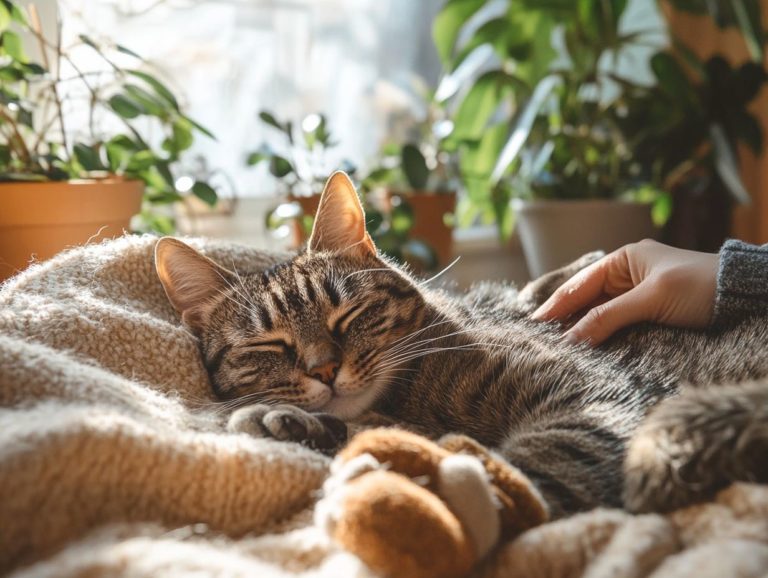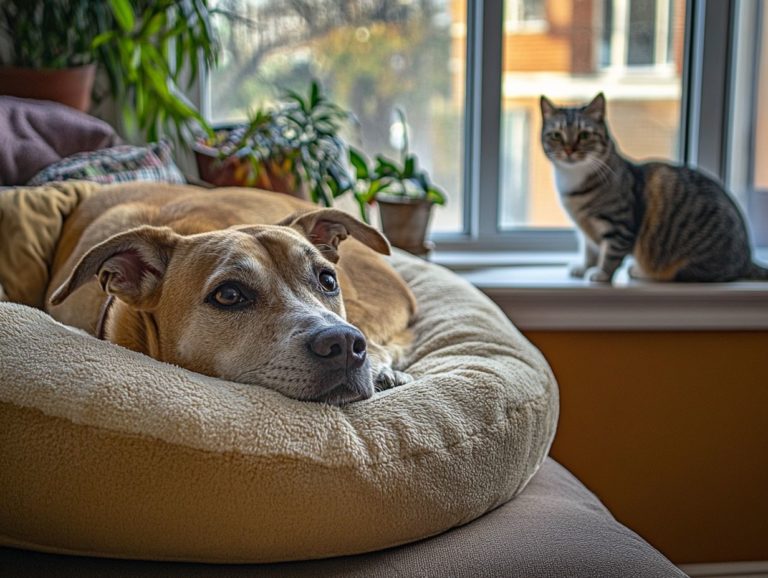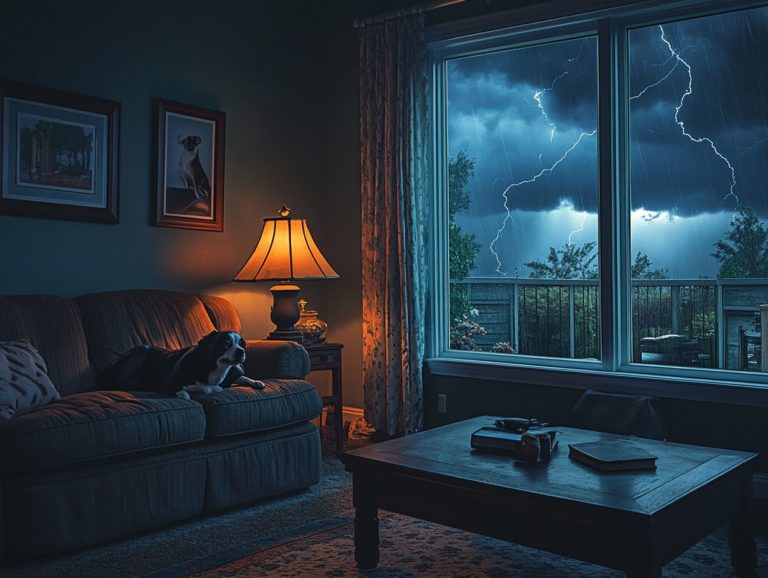5 Signs Your Cat May be Anxious
Did you know your cat might be hiding their anxiety? With their independent and curious spirits, cats can sometimes mask their anxiety beneath a confident facade. As a careful pet owner, recognizing the signs of anxiety in your cat is essential for safeguarding their well-being.
This article delves into five key indicators that might suggest your cat is feeling stressed, ranging from excessive grooming to shifts in their eating habits. It also examines potential causes, offers effective strategies for alleviating anxiety, and highlights when seeking professional assistance becomes necessary.
Continue reading to discover how to best support your beloved companion.
Contents
Key Takeaways:
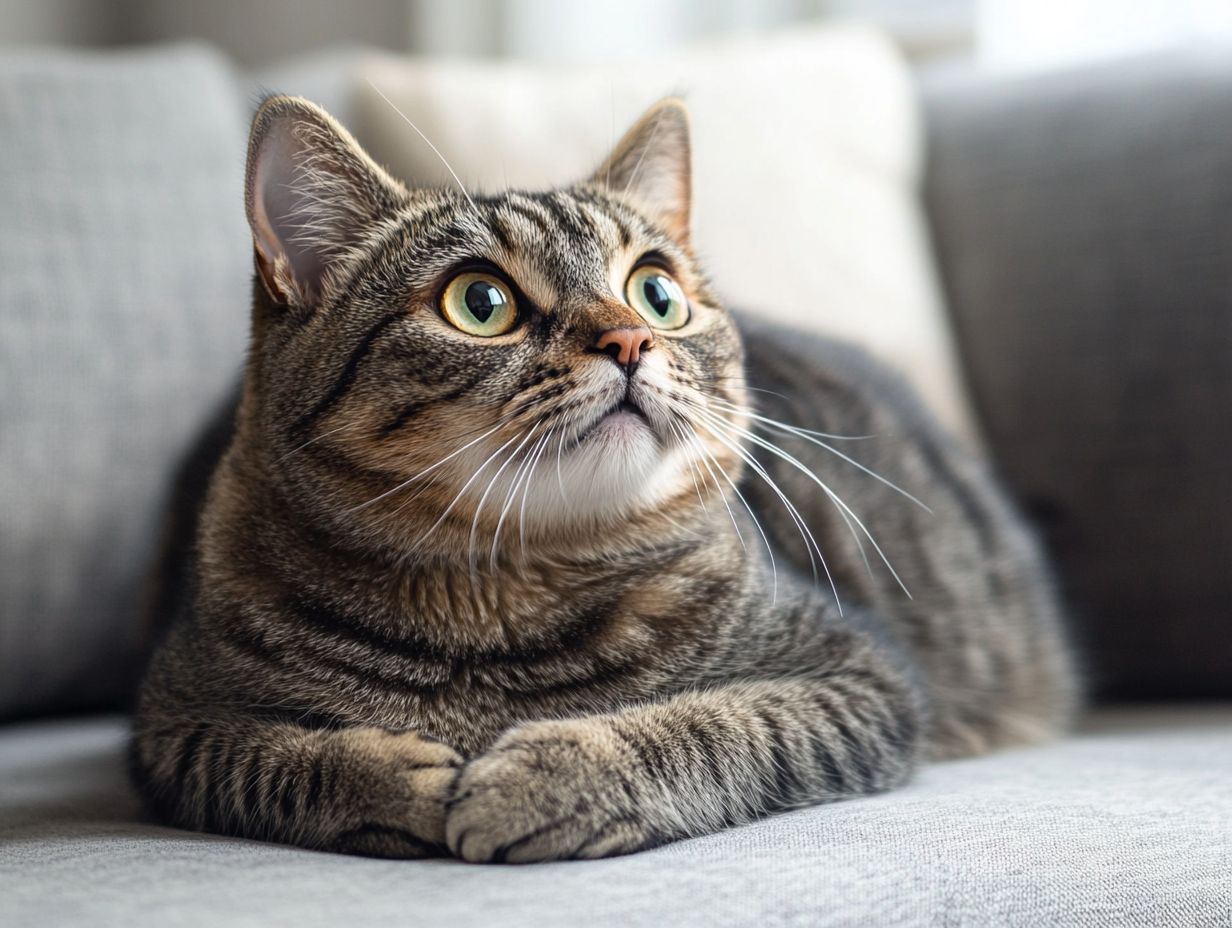
- Excessive grooming can be a sign of anxiety in cats.
- If your cat is hiding or avoiding interaction, it may indicate anxiety.
- Aggressive behavior can also be a symptom of anxiety in cats.
1. Excessive Grooming
Excessive grooming in cats often reveals itself as a compulsive behavior caused by anxiety. It can lead to significant distress and potential health issues if not properly addressed. You might notice your cat licking or grooming to the point of skin irritation or fur loss, suggesting deeper emotional or environmental stressors that need your attention and management.
Several triggers can contribute to this anxious behavior. This behavior can be a response to sudden changes in their environment, such as the introduction of a new pet, a move to a different home, or even shifts in daily routines.
Be on the lookout for signs like bald patches, red or inflamed skin, and an uptick in grooming frequency each can indicate a serious problem. Excessive grooming can lead to infections or chronic skin conditions, which are best avoided.
To help alleviate this troubling behavior, consider implementing calming techniques such as:
- Create a safe, quiet space for your cat.
- Use pheromone diffusers devices that release calming scents for cats to foster a soothing atmosphere.
- Engage in regular interactive play sessions to help reduce anxiety.
Consider consulting a veterinarian or a pet behaviorist for tailored treatments that address your cat s needs.
2. Hiding or Avoiding Interaction
Hiding or shunning interaction is a common indicator of anxiety in cats. When they feel stressed or threatened, they often retreat to quiet, secure spaces. To better understand this behavior, you may wonder how to tell if your pet is anxious, as it can arise from various triggers, including unfamiliar noises, environmental changes, or disruptions in their daily routines. It’s crucial to address these signs promptly to ensure your cat’s well-being.
Understanding these hiding behaviors is important for you as a cat owner, as they can reveal much about your cat’s emotional state. You might notice tendencies such as withdrawal or a reluctance to engage in play, which could indicate deeper issues that merit your attention.
To foster a more inviting environment, consider establishing safe zones with cozy beds or enclosed spaces where your cat can feel at ease. Incorporate gentle interactions like soft speaking, offering treats, or engaging in low-energy play to encourage more social behavior.
This gradual approach can significantly alleviate anxiety and help build a trusting bond, allowing your cat to feel more secure in its surroundings.
3. Aggressive Behavior
Aggressive behavior in cats can signal deeper issues like anxiety and stress. These issues are typically triggered by specific changes in their environment or interactions that make them feel threatened. You might witness reactions such as hissing and swatting or even more serious attacks. Understanding your cat’s emotional triggers is essential. It allows you to respond appropriately and help mitigate these behaviors.
Common types of aggression include:
- Territorial aggression
- Fear-induced aggression
- Social aggression
These behaviors can arise from various triggers, such as introducing new pets, loud noises, or unfamiliar visitors. Recognizing these signs early is vital for you as a cat owner. Effective management techniques may include creating a safe space for your cat, using calming products, or training cats with anxiety issues to slowly get used to new things.
If the situation is serious, contact a veterinary behaviorist. They are experts who understand animal behavior and can help with anxiety problems. They can provide personalized diagnosis and treatment plans that address underlying anxiety disorders.
This tailored approach ensures that both your cat and its environment foster a sense of harmony and well-being.
4. Changes in Eating Habits

Watch for changes in your cat s eating. It might mean they re feeling anxious! Stress can lead to overeating or a complete disinterest in food, both of which can seriously impact their overall health. Factors such as shifts in their environment, the introduction of new pets, or changes in daily routines can all contribute to your cat’s emotional state.
It’s crucial to pay attention to these behavioral shifts. Regularly observing feeding times and noting any variations can offer valuable insights into your cat s emotional well-being.
Maintaining a consistent feeding schedule can help soothe anxiety by providing a sense of stability. Always address potential stressors like loud noises or household changes that could be affecting your cat.
If these strategies fail to yield improvements and significant changes persist, it may be time for veterinary intervention. A professional can help rule out any underlying health issues and recommend a tailored approach for managing your cat’s anxiety. This ensures their overall health remains intact.
5. Excessive Vocalization
Excessive vocalization in your cat often signals anxiety. Don t ignore those sounds! Your cat is speaking to you. If you notice increased meowing, yowling, or other vocal sounds, it s likely a manifestation of distress or a plea for attention. This behavior can stem from changes in their environment, lack of socialization, or unmet emotional needs, indicating that your pet may be grappling with significant anxiety.
Pay close attention to these vocalizations. They often reflect specific concerns, like fear of unfamiliar noises or disruptions in their routine. To help ease this behavior, creating a calming environment is essential. Simple adjustments, such as providing cozy hiding spots, using pheromone diffusers, or playing soothing music, can significantly alleviate stress.
Maintaining a consistent daily routine can help your cat feel secure. Engaging them in interactive playtime can satisfy their social needs and serve as a delightful distraction from anxiety triggers.
How Do Cats Show Anxiety?
Cats reveal their anxiety through a range of signs and behaviors, such as excessive grooming, hiding, aggressive actions, shifts in eating habits, and heightened vocalization. As a pet owner, recognizing these symptoms is vital. It helps you understand your cat’s emotional state and address any underlying issues contributing to their anxiety. For more guidance, consider these 5 tips for calming an anxious cat. This awareness ultimately enhances your cat’s overall well-being and quality of life.
By grasping these signs, you can identify specific triggers that may arise from environmental changes like moving to a new home or introducing new pets, as well as psychological factors, such as past trauma or insufficient socialization. For example, signs your pet may be experiencing anxiety can include behaviors indicating an overload of sensory input, possibly due to loud noises or a chaotic household dynamic.
Creating a calm environment, establishing consistent routines, and employing positive reinforcement techniques are all ways to significantly alleviate your feline friend’s stress. In doing so, you foster a more secure emotional landscape, allowing your cat to thrive.
What Are the Possible Causes of Anxiety in Cats?
The causes of anxiety in cats can vary widely. They may arise from sudden changes in their environment or disruptions in their daily routines, which can affect their emotional stability. Factors such as introducing new pets, loud noises, unfamiliar visitors, or changes in their living space can elevate stress levels. As an owner, it’s vital to pay careful attention to these elements to create a calming environment.
Cats are creatures of habit, and even minor disruptions like rearranging furniture or altering their feeding schedule can trigger anxiety. Socialization issues often arise when a cat feels threatened or overwhelmed by interactions with new animals or humans, leading to withdrawal or aggressive behavior.
Identifying specific triggers is crucial. Understanding what causes your cat distress enables you to develop tailored management strategies. These strategies could involve creating safe spaces, maintaining consistent routines, and using gradual training methods to help your feline companion regain a sense of security and comfort.
How Can You Help Your Anxious Cat?
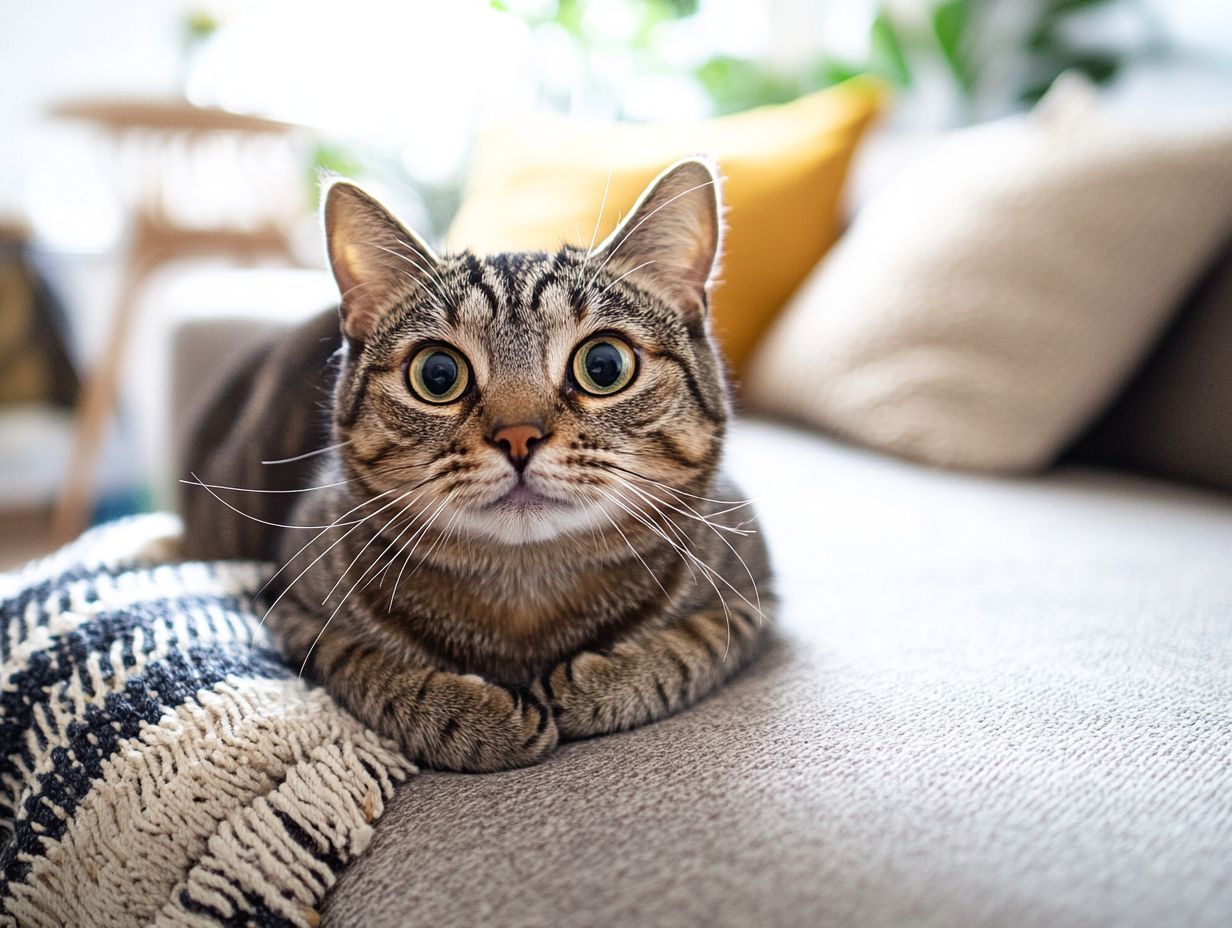
Helping an anxious cat requires a mix of techniques designed to foster a soothing environment while addressing the root causes of their stress. You can introduce calming elements, establish consistent routines, and use training methods to significantly enhance your cat s emotional well-being and reduce anxiety-related behaviors.
You can modify the environment by creating safe spaces with cozy hiding spots and using pheromone diffusers to promote relaxation. Socialization practices, like gradually introducing your cat to new stimuli and rewarding positive interactions, can greatly help your cat feel safe and at ease.
Implementing calming treatments, such as herbal supplements or anxiety wraps, can offer relief. For more personalized solutions, consulting with veterinary behaviorists can be incredibly helpful. They can provide specialized advice and discuss the potential for medication that may further assist in managing your cat s anxiety symptoms.
When Should You Seek Professional Help for Your Cat’s Anxiety?
Seeking professional help for your cat’s anxiety is important when you notice persistent signs of distress that do not improve with basic management techniques. If your cat displays extreme behaviors such as aggressive reactions, excessive grooming, or significant changes in eating habits it s time to consult a veterinary behaviorist for a thorough diagnosis and personalized treatment options.
These specialists excel in understanding the emotional and psychological aspects of pet behavior, allowing them to develop customized treatment plans that tackle the unique challenges each cat faces. Alongside veterinary behaviorists, certified animal trainers and veterinary technicians can also provide invaluable support.
Recognizing the importance of early diagnosis is crucial, as timely intervention can lead to more effective solutions and greatly enhance your cat’s overall quality of life. With the right approach, your cat can enjoy a calmer, happier existence and reclaim the peace it truly deserves.
Can Anxiety in Cats Be Prevented?
Preventing anxiety in cats requires adopting proactive management strategies that promote a stable and secure environment, effectively minimizing stressors that can trigger anxiety disorders. By establishing consistent daily routines and ensuring a comfortable living space, you can significantly lower the chances of your feline friend developing anxiety-related behaviors.
In addition to these foundational steps, introducing environmental enrichment is essential. Engaging toys, vertical spaces like cat trees, and interactive playtime can stimulate your cat s mind.
It’s crucial to observe behavioral cues, as understanding your cat’s unique personality will help you identify potential stressors. Regular behavioral training can also create a sense of security, allowing your cat to respond positively to specific commands and situations.
By investing time in these strategies, you not only improve your cat’s quality of life but also build a strong bond based on trust and understanding.
What Are Some Natural Remedies for Cat Anxiety?
Natural remedies for cat anxiety present gentle, non-invasive solutions that can effectively alleviate stress and foster calmness in your beloved pet. Techniques like calming pheromones which are scents that mimic the natural ones cats produce to feel safe and relaxed soothing herbs, and thoughtful environmental modifications can significantly aid in managing anxiety symptoms. This holistic approach enhances your cat s emotional well-being.
Using these natural strategies helps create a calmer environment for your cat. For example, synthetic feline pheromone diffusers can replicate calming scents, promoting relaxation.
Herbal alternatives, such as valerian or chamomile, may also be worth considering, as they possess soothing properties that can ease restlessness.
Adjusting your cat’s environment, like providing a quiet space or engaging them with interactive play, can help reduce anxiety. It s essential to consult a veterinarian before introducing any new treatments to ensure safety and suitability for your cat’s unique needs.
Frequently Asked Questions
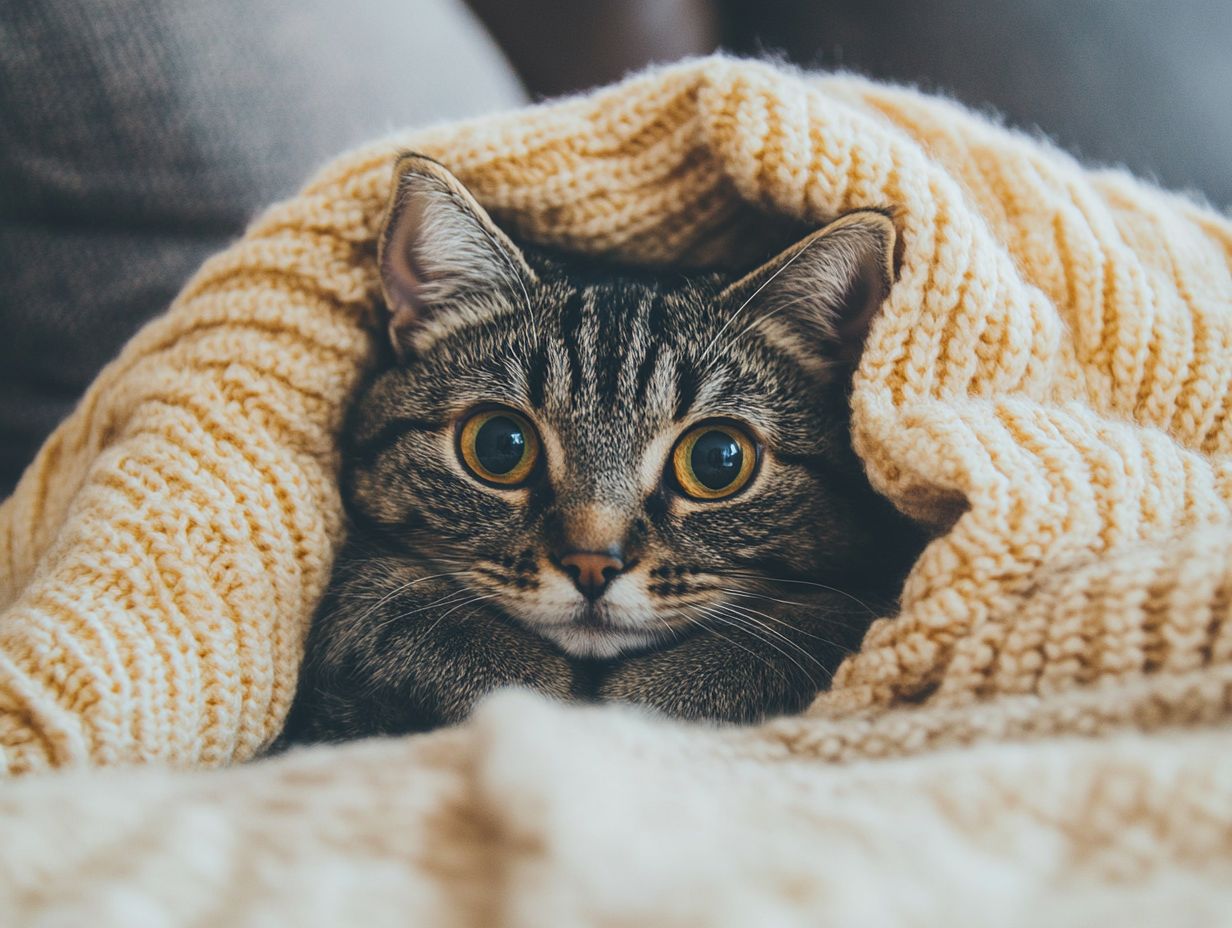
Here are 5 signs your cat may be anxious:
- Excessive grooming or hair loss
- Hiding or avoiding social interaction
- Aggression towards people or other animals
- Changes in appetite or weight
- Excessive vocalization or destructive behavior
How can I tell if my cat is anxious or just being lazy?
If your cat displays any of the signs mentioned above consistently for a prolonged period, they are likely experiencing anxiety rather than just being lazy. To learn more about this, check out how to identify if your pet has anxiety. However, if these behaviors are occasional or short-lived, it may just indicate your cat’s normal behavior.
What can cause my cat to become anxious?
Many factors can contribute to anxiety in cats, including changes in their environment, past traumatic experiences, or underlying medical conditions. Don t hesitate to consult your veterinarian to find the best solution for your furry friend!
Can I help my cat overcome their anxiety?
Yes! There are several ways to help your cat manage and overcome their anxiety. This may include creating a calm and safe environment, providing mental and physical stimulation, and using natural supplements or medications prescribed by a veterinarian.
Should I seek professional help for my cat’s anxiety?
If your cat’s anxiety causes significant distress or interferes with their daily activities, it is recommended to seek professional help from a veterinarian or animal behaviorist. They can provide a proper diagnosis and develop a tailored treatment plan for your cat’s specific needs.
Can anxiety in cats be prevented?
While some cats may be more prone to anxiety than others, there are steps you can take to prevent or minimize their anxiety. This includes providing a stable environment, socializing them at a young age, and addressing any underlying medical issues early on.
Try out these remedies and monitor your cat’s behavior for improvements!

